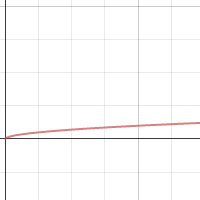Topic how do square roots work: Square roots are fundamental to mathematics, providing a foundation for various mathematical concepts and real-world applications. This comprehensive guide explores the definition, properties, and methods to find square roots, along with their applications and solved problems to enhance your understanding. Dive in to master the intriguing world of square roots.
Table of Content
- Understanding Square Roots
- Introduction
- Definition of Square Roots
- Methods to Find Square Roots
- Square Root Table
- Square Roots of Decimals
- Square Roots of Negative Numbers
- Square Roots of Complex Numbers
- Square Root Equations
- Square of a Number
- Applications of Square Roots
- List of Common Square Roots
- Solved Problems
- Worksheet and Practice Problems
- FAQs about Square Roots
- YOUTUBE: Square Roots là gì và làm thế nào để tính căn bậc hai? Tìm hiểu cùng Mr. J trong video này.
Understanding Square Roots
The square root of a number is a value that, when multiplied by itself, gives the original number. The square root is denoted by the radical symbol √. For example, the square root of 9 is 3 because 3 × 3 = 9.
Properties of Square Roots
- Every positive number has two square roots: one positive and one negative.
- The principal square root is the non-negative root, denoted by √x.
- Square roots of perfect squares are integers. For example, √16 = 4.
- Square roots of non-perfect squares are irrational numbers, which cannot be expressed as a simple fraction. For example, √2 ≈ 1.41421.
Calculating Square Roots
Calculating the square root of perfect squares is straightforward. For example:
- √25 = 5 because 5 × 5 = 25
- √36 = 6 because 6 × 6 = 36
For non-perfect squares, the process involves estimation or using a calculator:
- Identify the two closest perfect squares. For √10, it is between √9 (3) and √16 (4).
- Estimate the value between these two numbers. √10 is approximately 3.16.
Examples
Here are some more examples:
| Number | Square | Square Root |
|---|---|---|
| 4 | 16 | 4 |
| 5 | 25 | 5 |
| 6 | 36 | 6 |
| 7 | 49 | 7 |
Square Root Symbol
The symbol for the square root is called a radical and is written as √. For example, √9 = 3.
Solving Equations Involving Square Roots
To solve equations involving square roots, follow these steps:
- Isolate the square root expression.
- Square both sides of the equation to eliminate the square root.
- Solve the resulting equation.
Example:
Solve √(x + 3) = 5:
- Square both sides: x + 3 = 25
- Solve for x: x = 22
Perfect Squares
Perfect squares are numbers that are squares of integers. Here are the perfect squares from 0 to 15:
- 0² = 0
- 2² = 4
- 3² = 9
- 4² = 16
- 5² = 25
- 6² = 36
- 7² = 49
- 8² = 64
- 9² = 81
- 10² = 100
- 11² = 121
- 12² = 144
- 13² = 169
- 14² = 196
- 15² = 225

READ MORE:
Introduction
Square roots are fundamental mathematical operations that allow us to determine a number which, when multiplied by itself, yields the original number. Mathematically, if y is the square root of x, it can be expressed as y = √x or equivalently, y2 = x. The symbol used to denote a square root is the radical sign (√), and the number under this symbol is called the radicand.
Square roots have wide applications in various fields such as engineering, physics, and statistics. They are crucial for solving quadratic equations, analyzing data distributions, and understanding geometric properties. For example, the square root of 16 is 4, because 4 × 4 = 16.
This guide will cover various aspects of square roots, including their properties, methods to find them, and their applications in different domains. Whether dealing with perfect squares or estimating the roots of non-perfect squares, mastering square roots is essential for advanced mathematical problem-solving.
Definition of Square Roots
A square root of a number \( x \) is a value \( y \) such that \( y^2 = x \). In other words, \( y \) is a number which, when multiplied by itself, results in \( x \). The square root of \( x \) is denoted by the symbol \( \sqrt{x} \). For example, \( \sqrt{16} = 4 \) because \( 4 \times 4 = 16 \).
Every positive number \( x \) has two square roots: one positive (called the principal square root) and one negative. These can be represented as \( \pm \sqrt{x} \). For instance, the square roots of 25 are 5 and -5 because \( 5^2 = 25 \) and \( (-5)^2 = 25 \).
The principal square root, which is the non-negative square root, is typically the one referred to by the symbol \( \sqrt{x} \). For example, \( \sqrt{36} = 6 \) rather than -6.
Square roots are essential in various areas of mathematics and science. They are used in solving quadratic equations, understanding geometric properties, and more. Understanding square roots and their properties is fundamental to further exploration in mathematics.
Methods to Find Square Roots
Finding square roots can be done using various methods. Below are some commonly used techniques:
1. By Prime Factorization
This method involves breaking down the number into its prime factors and then pairing them.
- Express the number as a product of prime factors.
- Group the prime factors into pairs.
- Take one factor from each pair and multiply them to get the square root.
Example: To find the square root of 900:
- Prime factors of 900: \(900 = 2^2 \times 3^2 \times 5^2\)
- Square root: \(\sqrt{900} = \sqrt{2^2 \times 3^2 \times 5^2} = 2 \times 3 \times 5 = 30\)
2. By Repeated Subtraction
This ancient method involves repeatedly subtracting consecutive odd numbers from the given number until the result is zero.
- Start with the given number.
- Subtract consecutive odd numbers (1, 3, 5, 7, ...).
- Count the number of subtractions until the result is zero. The count is the square root of the number.
Example: To find the square root of 16:
- 16 - 1 = 15
- 15 - 3 = 12
- 12 - 5 = 7
- 7 - 7 = 0
- Number of subtractions = 4, so \(\sqrt{16} = 4\)
3. By Long Division
This method is suitable for finding the square roots of large numbers and decimals. It involves a process similar to long division.
- Pair the digits of the number starting from the decimal point (if any).
- Find the largest number whose square is less than or equal to the first pair.
- Subtract the square of this number from the first pair and bring down the next pair.
- Double the current result and use it as the new divisor.
- Repeat the process until all pairs are used up.
Example: To find the square root of 529:
- Pairing: 5 | 29
- First digit: \(\sqrt{5}\) is 2 (since \(2^2 = 4\))
- Subtract 4 from 5, get 1. Bring down 29, making it 129.
- New divisor: 2 doubled is 4. Find the largest digit \(x\) such that \(4x \times x \leq 129\).
- 5 works (since \(45 \times 5 = 225\)). Subtract 225 from 529 to get 0.
- So, \(\sqrt{529} = 23\).
4. By Estimation
This method involves finding the two closest perfect squares between which the number lies and then estimating the square root.
- Identify the two nearest perfect squares the number falls between.
- Estimate the square root based on these perfect squares.
- Refine the estimate by averaging and squaring until the desired accuracy is achieved.
Example: To find the square root of 20:
- It lies between 16 (\(4^2\)) and 25 (\(5^2\)).
- Estimate: 4.5
- Refine: \(4.5^2 = 20.25\). Too high. Try 4.4: \(4.4^2 = 19.36\).
- Continue refining: \(4.45^2 = 19.80\), \(4.47^2 = 19.98\).
- So, \(\sqrt{20} \approx 4.47\).
Square Root Table
A square root table provides a quick reference for the square roots of perfect squares and other common numbers. Here is a table that lists the square roots of numbers from 1 to 20, as well as some common larger values:
| Number | Square Root |
|---|---|
| 1 | 1 |
| 2 | 1.414 |
| 3 | 1.732 |
| 4 | 2 |
| 5 | 2.236 |
| 6 | 2.449 |
| 7 | 2.646 |
| 8 | 2.828 |
| 9 | 3 |
| 10 | 3.162 |
| 11 | 3.317 |
| 12 | 3.464 |
| 13 | 3.606 |
| 14 | 3.742 |
| 15 | 3.873 |
| 16 | 4 |
| 17 | 4.123 |
| 18 | 4.243 |
| 19 | 4.359 |
| 20 | 4.472 |
| 25 | 5 |
| 30 | 5.477 |
| 36 | 6 |
| 40 | 6.325 |
| 49 | 7 |
| 50 | 7.071 |
| 64 | 8 |
| 81 | 9 |
| 100 | 10 |
This table can be useful for quickly finding the square roots of common numbers, especially when solving mathematical problems without a calculator.

Square Roots of Decimals
Calculating square roots of decimal numbers follows similar principles to whole numbers, but it involves a few additional steps to handle the decimal places.
- Estimation Method: Approximate the square root using nearby whole numbers and adjust based on how close the square of your estimate is to the original number.
- Long Division: Apply the long division method by separating the number into periods of two digits starting from the decimal point, finding the square root for each period, and joining them together to find the complete square root.
- Using a Calculator: Utilize a scientific calculator to directly compute the square root of the decimal number.
These methods ensure accuracy and efficiency in finding square roots of decimal numbers.
Square Roots of Negative Numbers
When dealing with square roots of negative numbers, it's important to understand the concept of imaginary numbers. The square root of a negative number results in an imaginary number because no real number squared can produce a negative result.
- Definition of Imaginary Unit: The square root of -1 is denoted by \( i \), where \( i^2 = -1 \).
- Complex Numbers: Express square roots of negative numbers in terms of complex numbers, typically written as \( \sqrt{-a} = \sqrt{a}i \), where \( i \) is the imaginary unit.
- Application in Mathematics: Complex numbers are extensively used in various fields such as engineering, physics, and mathematics, allowing solutions to problems that involve square roots of negative numbers.
Square Roots of Complex Numbers
Calculating square roots of complex numbers involves understanding the properties of complex numbers and applying the square root rules for these numbers.
- Complex Number Representation: A complex number is expressed in the form \( a + bi \), where \( a \) and \( b \) are real numbers, and \( i \) is the imaginary unit (where \( i^2 = -1 \)).
- Square Root Calculation: To find the square root of a complex number \( z = a + bi \), use the formula: \[ \sqrt{z} = \sqrt{r} \left( \cos\left(\frac{\theta + 2k\pi}{2}\right) + i \sin\left(\frac{\theta + 2k\pi}{2}\right) \right) \] where \( r = \sqrt{a^2 + b^2} \) (the modulus of \( z \)), \( \theta = \tan^{-1}\left(\frac{b}{a}\right) \) (the argument of \( z \)), and \( k = 0, 1 \) determines the two square roots.
- Applications: Square roots of complex numbers are essential in fields such as electrical engineering, quantum mechanics, and signal processing for solving equations and analyzing systems involving complex phenomena.
Square Root Equations
A square root equation is an equation where a variable is under a square root symbol. Solving such equations involves squaring both sides of the equation to eliminate the square root.
- Basic Steps: To solve \( \sqrt{x} = a \), square both sides to get \( x = a^2 \). Ensure to check for extraneous solutions that may arise from squaring both sides.
- Complex Solutions: For equations involving complex numbers, handle the square root of negative numbers by introducing imaginary units and following the rules for complex arithmetic.
- Applications in Real World: Square root equations are common in various fields such as physics, engineering, and finance where quantities related to square roots need to be determined or solved for.

Square of a Number
The square of a number is obtained by multiplying the number by itself. It's denoted as \( x^2 \), where \( x \) is the number.
- Calculation: To find the square of a number \( x \), compute \( x \times x = x^2 \).
- Properties: Squaring a number results in a non-negative value (zero or positive).
- Application: The concept of squares is fundamental in mathematics, used in various calculations such as finding areas of squares and rectangles, determining distances in geometry, and solving quadratic equations.
Applications of Square Roots
Square roots find extensive applications across various disciplines due to their relevance in solving problems involving magnitudes, distances, and areas.
- Geometry: Calculate the side length of a square given its area or determine the diagonal of a rectangle using the Pythagorean theorem.
- Physics: Analyze motion in two dimensions by calculating velocities and accelerations, involving components in x and y directions.
- Engineering: Determine electrical currents and voltages using root mean square (RMS) values in AC circuits, ensuring accurate power calculations.
- Finance: Assess the standard deviation in statistical analysis to understand the risk associated with an investment portfolio or predict fluctuations in stock prices.
- Computer Graphics: Render realistic images by calculating distances and dimensions for pixel placement and determining light intensity using inverse square law.
List of Common Square Roots
Below are some common square roots of perfect squares frequently encountered in mathematics:
- \( \sqrt{1} = 1 \)
- \( \sqrt{4} = 2 \)
- \( \sqrt{9} = 3 \)
- \( \sqrt{16} = 4 \)
- \( \sqrt{25} = 5 \)
- \( \sqrt{36} = 6 \)
- \( \sqrt{49} = 7 \)
- \( \sqrt{64} = 8 \)
- \( \sqrt{81} = 9 \)
- \( \sqrt{100} = 10 \)
Solved Problems
Below are some solved problems illustrating the application of square roots in mathematical contexts:
- Calculate the length of the side of a square if its area is 25 square units.
- Determine the diagonal of a rectangle with sides measuring 3 units and 4 units.
- Find the distance between two points \( (x_1, y_1) \) and \( (x_2, y_2) \) in a coordinate plane.
- Solve the quadratic equation \( x^2 - 9 = 0 \) to find the values of \( x \).
- Compute the RMS (Root Mean Square) value of a waveform given by \( V(t) = V_0 \sin(\omega t) \).

Worksheet and Practice Problems
Test your understanding of square roots with the following practice problems:
- Calculate \( \sqrt{169} \).
- Find the square root of \( 0.25 \).
- Determine \( x \) in \( \sqrt{x} = 5 \).
- Solve \( \sqrt{4x} = 6 \).
- Compute \( \sqrt{(-25)} \).
FAQs about Square Roots
Here are some frequently asked questions about square roots:
- What is a square root?
- How do you find the square root of a number?
- What are perfect squares?
- Can square roots be negative?
- What is the difference between a square root and a cube root?
- What are the practical applications of square roots?
- How do you solve equations involving square roots?
- What is the square root of zero?
- How do you estimate square roots?
- What are complex square roots?
Square Roots là gì và làm thế nào để tính căn bậc hai? Tìm hiểu cùng Mr. J trong video này.
Square Roots là gì? | Toán học cùng Mr. J
READ MORE:
Cách đơn giản hóa các căn bậc hai trong toán học. Xem video hướng dẫn từ Mr. J.
Cách Đơn Giản Hóa Căn Bậc Hai | Toán Học với Mr. J
















